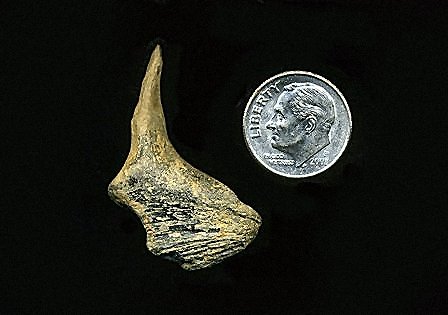|
SkaTES, RAYS and FISH |
|
SABER TOOTHED HERRING Enchodus is an extinct genus of bony fish that flourished during the Upper Cretaceous and is believed to have disappeared during the Eocene. One of the most notable attributes is the presence of large fangs at the front of the upper and lower jaws, leading to its nickname "the saber-toothed herring". Of the three species found in New Jersey Enchodus petrosus is the most common. Three different types of teeth from E. petrosus can readily be identified. The most distinctive are the upper and lower fangs (palatine teeth), these teeth are widest at their crescent shaped root bases and gradually taper to a point. These teeth may reach up to 2 inches in length. The upper lateral teeth are about half the length of the palatine teeth. They have a lens shaped cross section and have two cutting edges. The teeth from the lower lateral are about the same size as the upper lateral teeth but only have one cutting edge. The jaw sections of these fish are fairly common, but rarely with the complete fang intact.
Three different species have
been reported from the Monmouth County area; The palatine teeth of E. gladiolus and E. ferox have a slights “S” shape with striations and a barb at the tip. These are described in more detail on a separate page.
Center—palatine jaw section, on either side are the
lateral teeth
Left - Palatine jaw section.
Palatine jaw section with complete tooth
The palatine teeth of
E. gladiolus and E. ferox have a
slights “S”
|
